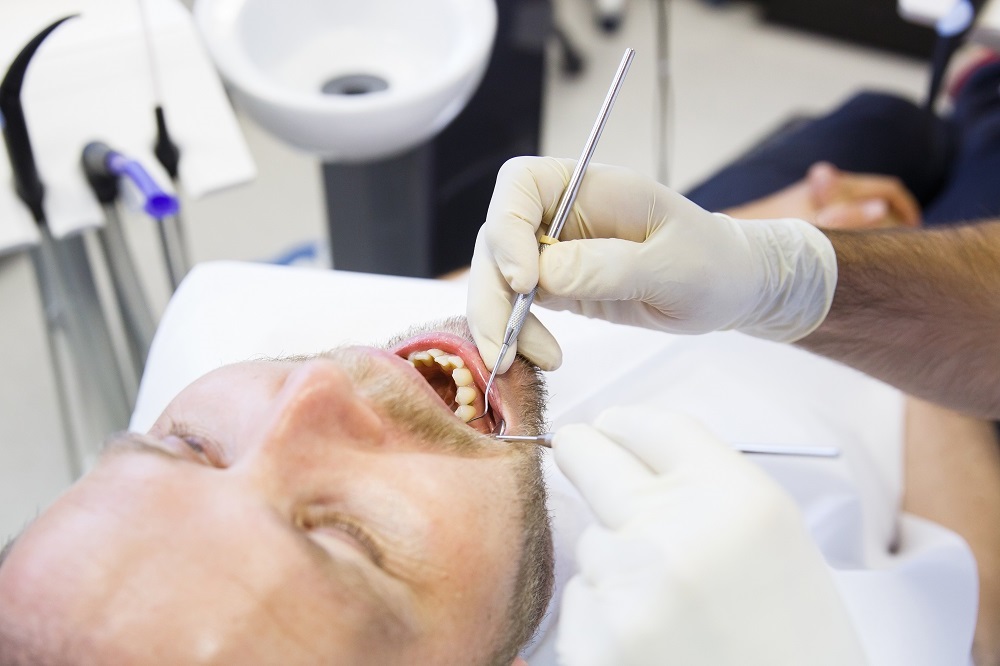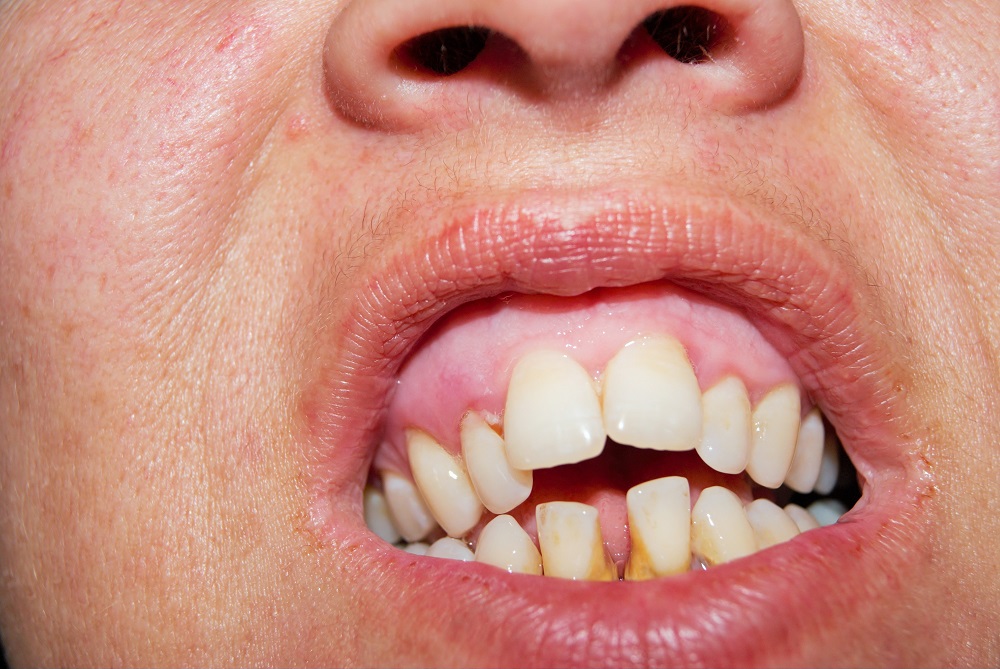- Hole in the tooth
- Worn tooth surface
- Worn biting edges
- Sensitivity to cold, heat, acidic drinks and food due to exposed dentin
- Toothache
- Diffuse pain that is difficult to locate (headache, earache …)
- Fractured tooth
- Loose tooth
Bacteria & plaque lead to caries
Poor oral hygiene, wrong diet (non-milk sugars in items other than fresh fruits and vegetables whereas the frequency of intake is more important than the amount consumed) and dental bacterial plaque cause common dental damages, such as caries and inflammatory periodontal disease. Plaque contains various microorganisms and develops mainly on and between teeth, along the gingival margin, and in fissures. If this adhering biofilm is not removed on a regular basis, the plaque can calcify and form calculus.
But there are more factors causing plaque:
- Teeth that are too close together
- Protruding edges of crowns or fillings
- Composition of germs in the oral cavity
- Too small amount of saliva in the oral cavity
Acids attack dental enamel
By eating or drinking something acid, the tooth enamel becomes softer for a short while, and loses a bit of its mineral content. However, the saliva slowly gets it back to its natural balance. But if this happens too often, the mouth is not able anymore to repair itself, and little pieces of enamel can be brushed away until – as time goes by – the surface of the teeth is lost.
Accidents & wrong brushing technique cause trauma & attrition
Accidents, falls or a bite into a hard object in the food can lead to dental damages. Tooth grinding may cause the wear and tear of the tooth surface. Abrasion is also often caused by cleaning the teeth with a hard brush or aggressive tooth paste. If the dentin is exposed, the affected people get sensitive to temperature. Although desensitizing toothpaste is available, a dentist’s visit might be needed as well.
Quite often, accumulation of plaque and a change in the microflora cause gingival inflammation. This may damage the periodontal membrane, lead to chronic periodontitis, and even tooth loss.
The right treatment depends on the respective damage and symptoms.
Treatment of caries
Not all stages of caries need dental treatment: If the exterior dental enamel suffers from decalcification, it is often sufficient to use regularly a special remineralisation gel. The dentist also may apply a fluoride varnish to the area to help stop further decay. However, if the caries has already reached an advanced stage and caused severe dental damages, the affected person has to go to the dentist to get a filling or crown.
Fillings
A filling replaces the missing enamel. The patient has to decide together with the dentist which filling material might be the best for the respective tooth. Another possibility may be inlays and onlays that fill the size and shape of the cavity. They are fixed in place with dental cement and are usually made from gold. This precious material is the most long-lasting and hard-wearing filling material.
Crowns
The dentist will probably suggest a crown if the tooth is extensively damaged. The decayed area of the tooth is drilled away and the crown is then placed over the remaining section. Crowns normally consist of metal, porcelain, or a combination of both materials.
Tooth extraction
In some serious cases of tooth decay, the tooth has to be removed to prevent the spread of infection. Losing certain teeth may affect the function and shape of surrounding teeth. In this case the dental surgeon might replace the tooth with a partial denture, bridge or implant.
Treatment of dental erosion
It’s not always necessary to treat dental erosion. The dentist is able to stop or prevent the damage if the patient gets regular check-ups and follows the doctor’s advices. However, if a tooth gets treatment, it is important to protect the enamel and the dentin underneath to prevent sensitivity. In general, bonding a filling onto the tooth will be enough to repair it. In more severe cases the dental surgeon may need to fit a veneer.
Treatment of trauma
If the tooth is damaged by external force such as falls, fight, accident, it is very important to go to the dentist immediately. The fractured or knocked-out tooth may often be saved if the dental material is put back into the mouth as quick as possible. By immobilizing a loose tooth with a splint, it can be saved from dental damage.
Preventive measures
- Best drinks for the teeth: still water and milk (cancels out the acids in the mouth)
- Acidic food and drinks:
- Only at mealtimes
- Should be drunk quickly and with a straw to avoid long contact with the teeth
- Cheese or milk should finish a meal to cancel out the acids
- After the meal: sugar-free gum that helps produce more saliva to cancel out the acids
- Teeth brushing:
- Not directly after a meal with acidic food or drinks. By waiting one hour at least, the teeth get the time to build up their mineral content again
- Teeth brushing at least once during the day and before going to bed
- Use of small-headed brush with medium to soft bristles
- Use of right toothpaste
- No abrasive dentifrice
- Desensitizing toothpaste in case of abrasion
- Fluoride toothpaste
- Fluoride, a natural mineral, is a very effective treatment to prevent and limit spread of tooth decay
- Fluoride protects teeth by strengthening the enamel, making teeth more resistant to the acids, reducing the ability of plaque bacteria to produce acid, and by enhancing the remineralisation of enamel.
- Visiting a dentist on a regular basis
- Oral examination: at least once a year
- More visits: in case of a special risk from oral disease


